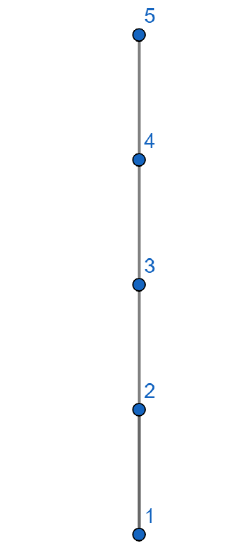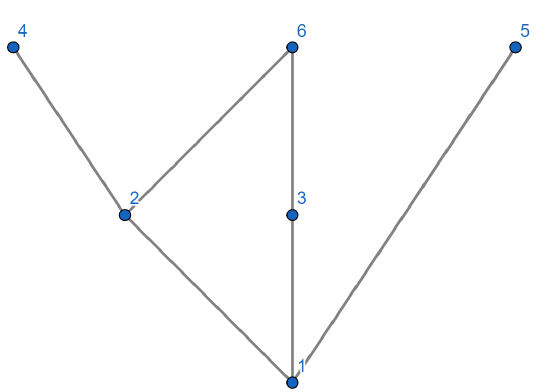2.2: Equivalence Relations, and Partial order
( \newcommand{\kernel}{\mathrm{null}\,}\)
Definition: Equivalence Relation
A binary relation is an equivalence relation on a nonempty set S if and only if the relation is reflexive(R), symmetric(S) and transitive(T).
Definition: Partial Order
A binary relation is a partial order if and only if the relation is reflexive(R), antisymmetric(A) and transitive(T).
Example 2.2.1: =
Let S=R. Define a relation R on S by aRb if and only if a=b. Is the relation R on S,
a) reflexive, b) symmetric, c) antisymmetric, d) transitive, e) an equivalence relation, f) a partial order.
Solution:
-
R is reflexive.
Proof:
Let a∈R. Since a=a, R is reflexive.◻
2. R is symmetric.
Proof:
Let a,b∈R such that aRb. Now, a=b⟹b=a. Thus bRa. Hence R is symmetric.◻
3. R is antisymmetric.
Proof:
Proof:
Proof:
Since is reflexive, symmetric and transitive, it is an equivalence relation.
Proof:
is a partial order, since
is reflexive, antisymmetric and transitive.
Example 2.2.2: Less than or equal to
Let and
be
. Is the relation a) reflexive, b) symmetric, c) antisymmetric, d) transitive, e) an equivalence relation, f) a partial order.
Solution
Proof:
Counterexample:
It is true that , but it is not true that
.
Proof:
We will show that given and
that
.
Proof:
We will show that given and
that
.
5. No, is not an equivalence relation on
since it is not symmetric.
6. Yes, is a partial order on
since it is reflexive, antisymmetric and transitive.
Definition: Equivalence Class
Given an equivalence relation R over a set S, for any a∈S the equivalence class of a is the set [a]R={b∈S∣aRb}, that is
[a]R is the set of all elements of S that are related to a.
Example 2.2.3: Equivalence relation
Define a relation that two shapes are related iff they are the same color. Is this relation an equivalence relation?
Equivalence classes are:

Example 2.2.4:
Define a relation that two shapes are related iff they are similar. Is this relation an equivalence relation?
Equivalence classes are:

Let A be a nonempty set. A partition of A is a set of nonempty pairwise disjoint sets whose union is A.
Note
For every equivalence relation over a nonempty set S, S has a partition.
Theorem 2.2.1
If ∼ is an equivalence relation over a non-empty set S. Then the set of all equivalence classes is denoted by {[a]∼|a∈S} forms a partition of S.
This means
1. Either [a]∩[b]=∅ or [a]=[b], for all a,b∈S.
2. S=∪a∈S[a].
- Proof
-
Assume
is an equivalence relation on a nonempty set
.
Let
. If
, then we are done. Otherwise,
Let
be the common element between them.
Then
and
, which means that
and
.
Since
is an equivalence relation and
.
Since
and
(due to transitive property),
.
For the following examples, determine whether or not each of the following binary relations on the given set
is reflexive, symmetric, antisymmetric, or transitive. If a relation has a certain property, prove this is so; otherwise, provide a counterexample to show that it does not. If
is an equivalence relation, describe the equivalence classes of
.
Example 2.2.5:
Let S={0,1,2,3,4,5,6,7,8,9}. Define a relation R on A=S×S by (a,b)R(c,d) if and only if 10a+b≤10c+d.
Solution
Proof:
Counter Example:
Since ,
is not symmetric on
.◻
Proof:
Thus is antisymmetric on
.◻
5. is transitive on .
Proof:
6. is not an equivalence relation since it is not reflexive, symmetric, and transitive.
Example 2.2.6:
Let . Define a relation
on
, by
if and only if
Solution
Proof:
Clearly since
and a negative integer multiplied by a negative integer is a positive integer in
.
Since ,
is reflexive on
.◻
2. is symmetric on
.
Proof:
Counter Example:
Since ,
is not antisymmetric on
.◻
Proof:
There are two cases to be examined:
Since in both possible cases
is transitive on
.◻
5. Since is reflexive, symmetric and transitive, it is an equivalence relation. Equivalence classes are
and
.
Note this is a partition since or
. So we have all the intersections are empty.
Further, we have . Note that
is excluded from
.
Hasse Diagram
Consider the set S={1,2,3,4,5}. Then the relation ≤ is a partial order on S. Check!
Partial orders are often pictured using the Hasse diagram, named after mathematician Helmut Hasse (1898-1979).
Definition: Hasse Diagram
Let S be a nonempty set and let R be a partial order relation on S. Then Hasse diagram construction is as follows:
- there is a vertex (denoted by dots) associated with every element of S.
- if aRb , then the vertex b is positioned higher than vertex a.
- if aRb and there is no c such that aRc and cRb, then a line is drawn from a to b.
This diagram is called the Hasse diagram.
Hasse diagram for S={1,2,3,4,5} with the relation ≤.
Solution

Show that Z+ with the relation | is a partial order. Draw a Hasse diagram for S={1,2,3,4,5,6} with the relation |.
Solution



